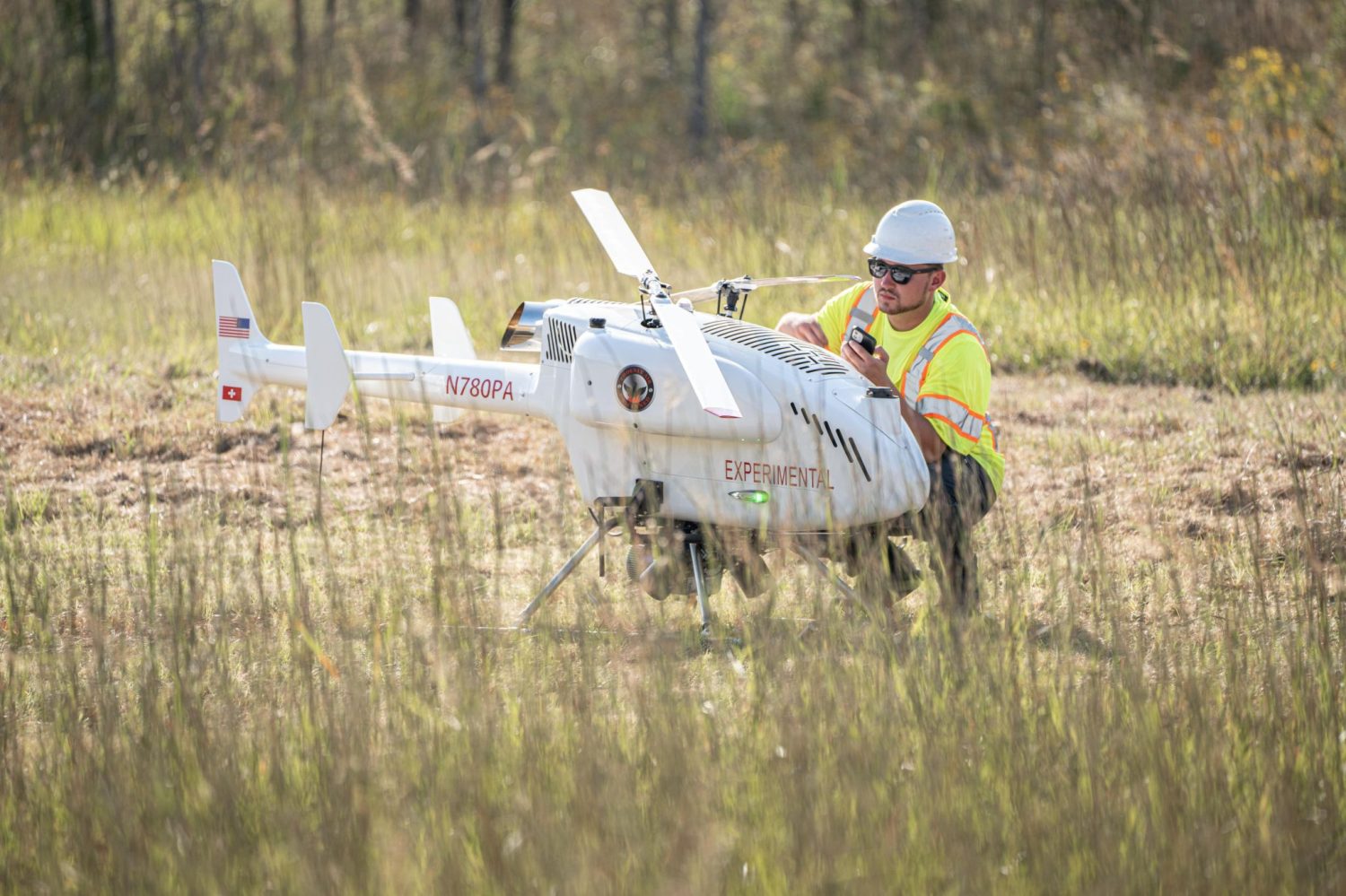
The Federal Aviation Administration (FAA) has authorized Phoenix Air Unmanned to operate a Swiss-made drone weighing up to 191.8 pounds beyond visual line of sight (BVLOS) for certain types of aerial works. This is the first time a drone of this size has received an exemption for commercial BVLOS operations by the FAA.
The FAA is allowing Phoenix Air Unmanned to operate SwissDrones SDO 50 V2 aircraft for aerial photography, survey, and powerline and pipeline patrol and inspection purposes. According to the terms set by the FAA, all flights must occur:
- In Class G airspace;
- In sparsely populated areas;
- Over pre-planned flight paths designed to avoid any known obstacles;
- Over linear infrastructure with right-of-way, except for takeoff and landing; and
- Within 100 feet above and 20 feet right or left of the centerline of the infrastructure that is being inspected.
SwissDrones SDO 50 V2 leverages the construction principle of intermeshing rotors. The drone uses a set of two rotors turning in opposite directions, with each rotor mast mounted at a slight angle to the other so that the blades intermesh without making contact. This arrangement also allows the aircraft to function without a tail rotor, which increases powertrain efficiency and reduces complexity. The fully autonomous SDO 50 V2 can stay airborne for up to 3.1 hours.
The FAA has issued the exemption for this drone after asking for public input on four BVLOS requests, including that from Phoenix Air Unmanned. The other companies that are awaiting the FAA’s decision on their requests are Zipline, UPS Flight Forward, and uAvionix.
The Association for Uncrewed Vehicle Systems International (AUVSI), which is advising the FAA on rulemaking for routine BVLOS operations, says it is encouraged by the exemption granted to Phoenix Air Unmanned. Michael Robbins, chief advocacy officer at AUVSI, stresses that by providing industry with frameworks for operations, the FAA is “increasing certainty to this growing industry and creating accelerated pathways for low-altitude operations.”
But at the same time, AUVSI is urging the FAA to proceed with a final BVLOS rule that will provide a regulatory pathway for such operations with urgency. “We urge the FAA to approve additional exemption requests that will unlock other valuable uses of drones and increase access to more communities — including cargo, consumer and health care delivery — and pave the way towards a Part 108 rule,” says Robbins.
Also read: Drone pilot gets $1,900 fine for ‘complete disregard’ for the rules
FTC: We use income earning auto affiliate links. More.





Comments